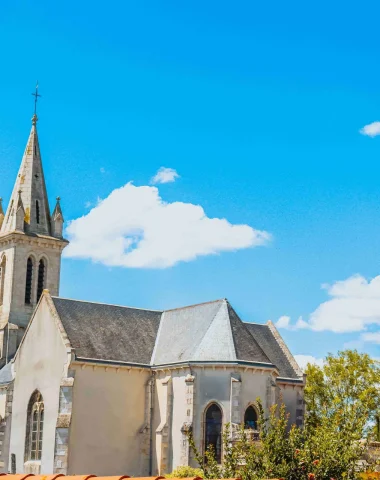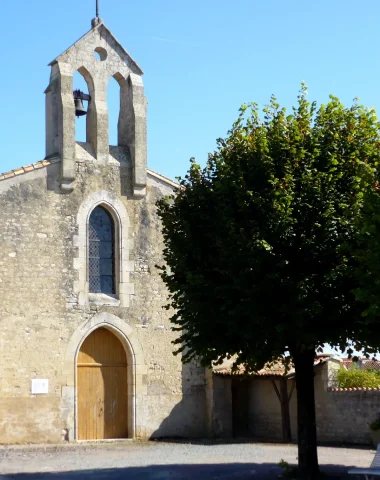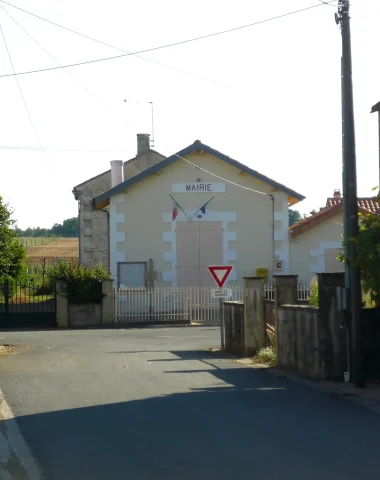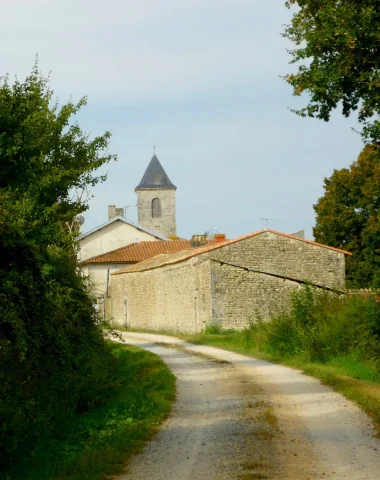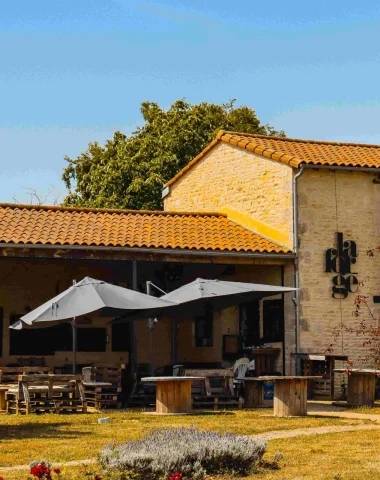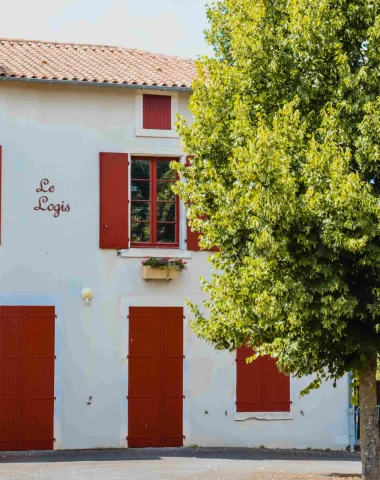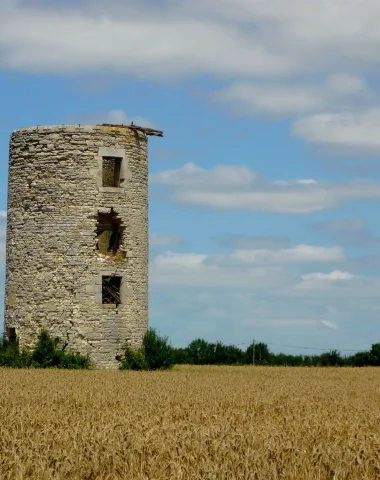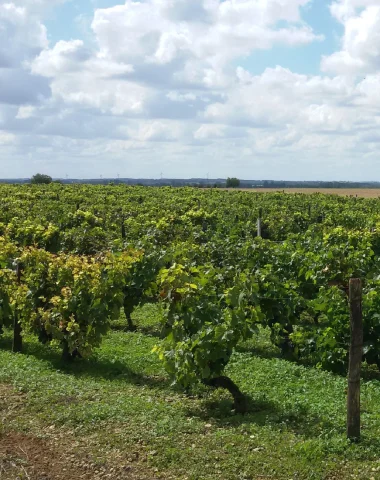Cité pour la 1ère fois en 980, le village est, à la Révolution, rebaptisé Symphorien, puis Phorien-s.-Sèvre car sa syllabe initiale avait la même assonance que l’adjectif proscrit. La commune peut s’enorgueillir d’avoir vu naître l’ancêtre de Lyndon Baines Johnson, 36è président des Etats-Unis : Pierre-François Creuzé, né en 1693, huguenot persécuté, émigré en Angleterre, puis aux Amériques. Amédée de La Porte, maire de St-Symphorien et propriétaire du château de Lens, est, au XIXè s., chef de cabinet du ministre des Travaux Publics, puis sous-secrétaire d’État à la Marine. Son fils Henri embrasse aussi une carrière émérite en tant que ministre de l’Instruction Publique, secrétaire perpétuel de l’Académie Française et l’un des acteurs politiques majeurs des Deux-Sèvres.
Que voir à Saint-Symphorien ?
01. Le château-mairie
Au cœur du bourg et dans un parc, bordé d’un bief et de venelles, le château, ancien siège de la seigneurie, est vraisemblablement rebâti au XIXème siècle. Seules sont conservées deux tours primitives flanquant la façade principale.
À voir : les papiers peints panoramiques du bureau du maire et des adjoints, datant de 1825 et classés au titre des Monuments historiques.
02. Le château de Lens (privé)
Ce château inscrit, édifié au XVIIIème siècle au cœur d’un jardin à la française et d’un parc à l’anglaise, consacre son activité à l’agriculture biologique depuis 2003.
Autres curiosités à voir :
- L’église St-Symphorien inscrite en 1927 (nef romane prolongée d’une autre gothique, clocher du XVIIIème, statue de la Vierge à l’Enfant nichée dans un contrefort, crucifix de 1613 sur le mur nord)
- Les dépendances de l’ancien logis de Crespé présentant une curieuse façade plantée d’ossements sur cinq rangées
- Le Centre administratif, social et culturel dans le parc de la mairie (musée de la bujhaïe, orangerie, four à pain)
- Le bief du Baril alimentant plusieurs lavoirs

